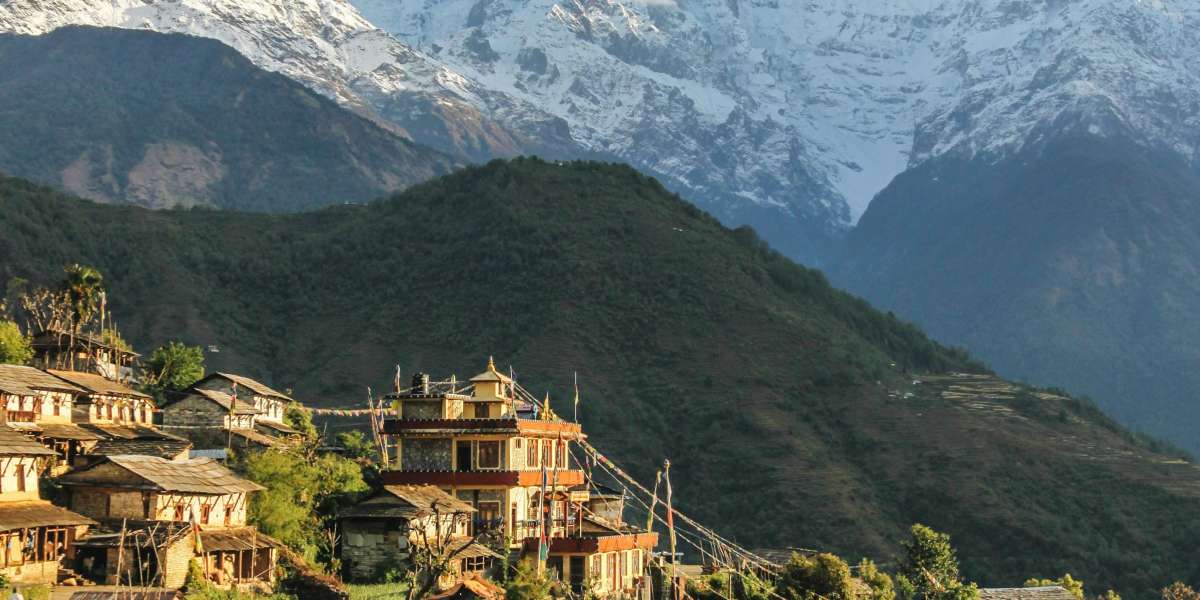Overview
One of Nepal's most famous treks, the Annapurna Base Camp Trek takes travelers to the foot of the Annapurna range, which is home to some of the world's tallest and most stunning peaks. This journey, which culminates at an elevation of 4,130 meters (13,550 feet) at Annapurna Base Camp, offers a combination of lush forests, cultural immersion, and breathtaking high-altitude scenery. It is nestled within the Annapurna Conservation Area.
Historical and Geographic Context
After the French expedition reached the top of Annapurna I in 1950, the Annapurna region was one of the first to be opened for trekking in Nepal in the 1950s. The Hindu goddess of nutrition, Annapurna, is the inspiration behind the trek's name. She represents the range's rich valleys and life-giving rivers. The base camp is situated in the Annapurna Sanctuary, which is known as such because it is a high glacial basin encircled by a ring of peaks.
The Path of Trekking
Depending on the pace and amount of rest days, the traditional ABC Trek route typically takes 7 to 12 days round trip, beginning in Pokhara, which is well-known for its views of lakes and mountains:
Day 1: Take a car from Pokhara to Nayapul, then hike to Ulleri or Ghandruk.
Day 2: Trek from Poon Hill to Ghorepani, which is well-known for its sunrise views.
Day 3: Trek to Poon Hill in the early morning to witness the sunrise, then make your way down to Tadapani.
Day 4: Travel from Tadapani to Chhomrong, the Annapurna Sanctuary's entrance.
Day 5: Traveling through thick rhododendron trees from Chhomrong to Bamboo.
Day 6: The trail progressively climbs from Bamboo to Deurali.
Day 7: Travel to Machhapuchhre Base Camp (MBC) via Deurali, where breathtaking views of the "Fishtail" mountain can be seen.
Day 8: Take in the complete view of the Annapurna peaks on a quick climb from MBC to Annapurna Base Camp.
Day 9–11: Trek back to Pokhara, often followed the same path but with some detours, such as passing through Jhinu Danda to visit natural hot springs.
Challenges and Preparation Altitude: Though not as high as Everest Base Camp, acclimatization is still crucial. The trek includes gradual ascents to aid in this process.
Fitness: A moderate to good level of fitness is required due to daily walking hours and elevation gain.
Weather: Best undertaken in the spring (March-May) or autumn (September-November) for clear skies and pleasant temperatures.
Gear: Good quality hiking boots, thermal clothing, a reliable sleeping bag, and protective gear for sun and cold are essential.
Permits: Trekkers need an Annapurna Conservation Area Permit (ACAP) and a Trekkers' Information Management System (TIMS) card.
Experience with Culture
Ethnic Diversity: Learn about the distinctive customs, music, and hospitality of the Gurung, Magar, and other ethnic groups.
Monasteries and Temples: Along the route, stop by historic Buddhist monasteries and Hindu temples, combining spirituality with the trek's scenic surroundings.
Beauty in Nature
Flora: Hike through bamboo groves and rhododendron forests, which are particularly colorful in the spring.
Fauna: In more isolated locations, look for birds, butterflies, and perhaps the Himalayan Thar or the elusive Snow Leopard.
Panoramic Views: The walk offers constantly shifting views of snow-capped summits and forested valleys from Poon Hill to Annapurna Base Camp.
In conclusion
Reaching the foot of some of the tallest mountains in the world is only one goal of the Annapurna Base Camp Trek; another is exploring Nepal's diverse cultural heritage and unmatched natural splendor. It offers a mix of physical difficulty, cultural discovery, and visual beauty, making it ideal for anyone seeking a Himalayan adventure without the severe elevation of Everest. The ABC journey creates a lasting impression on everyone who does it, regardless of whether they are there for the cultural exchange, personal accomplishment, or just to soak in the splendor of the Himalayas.














